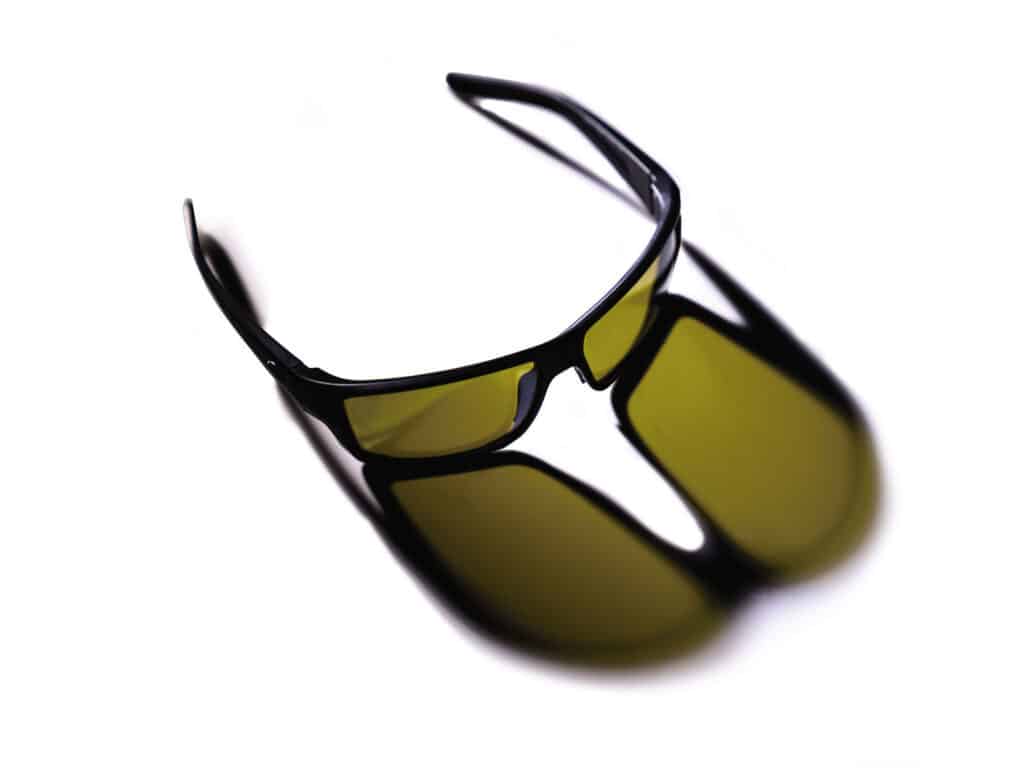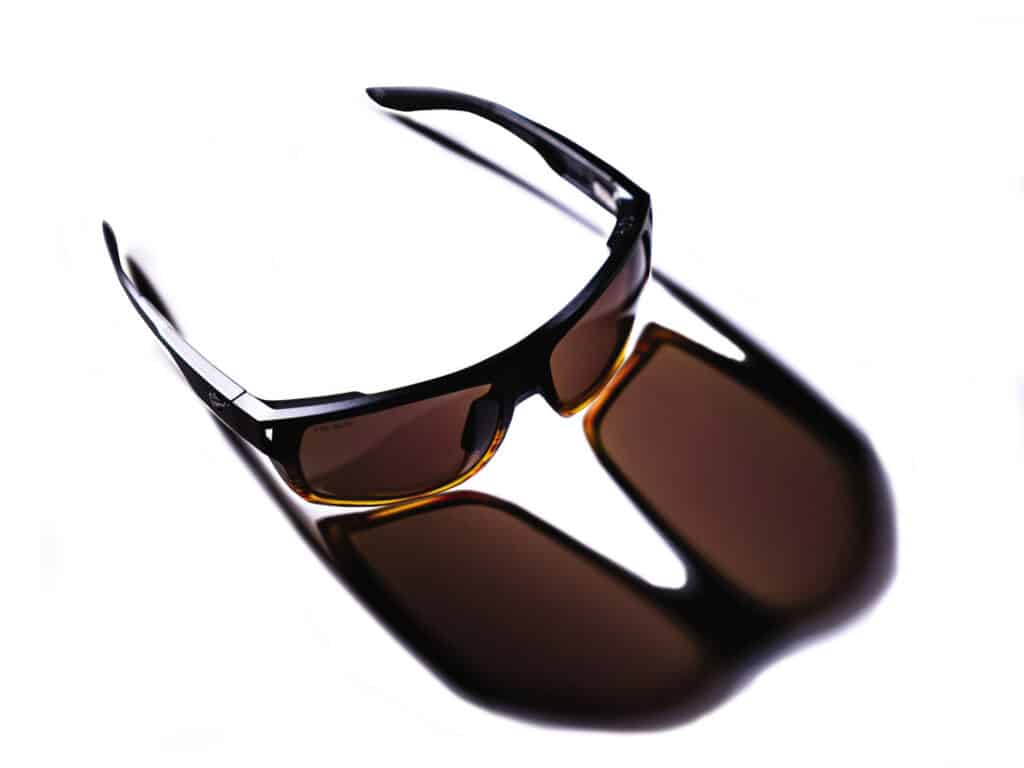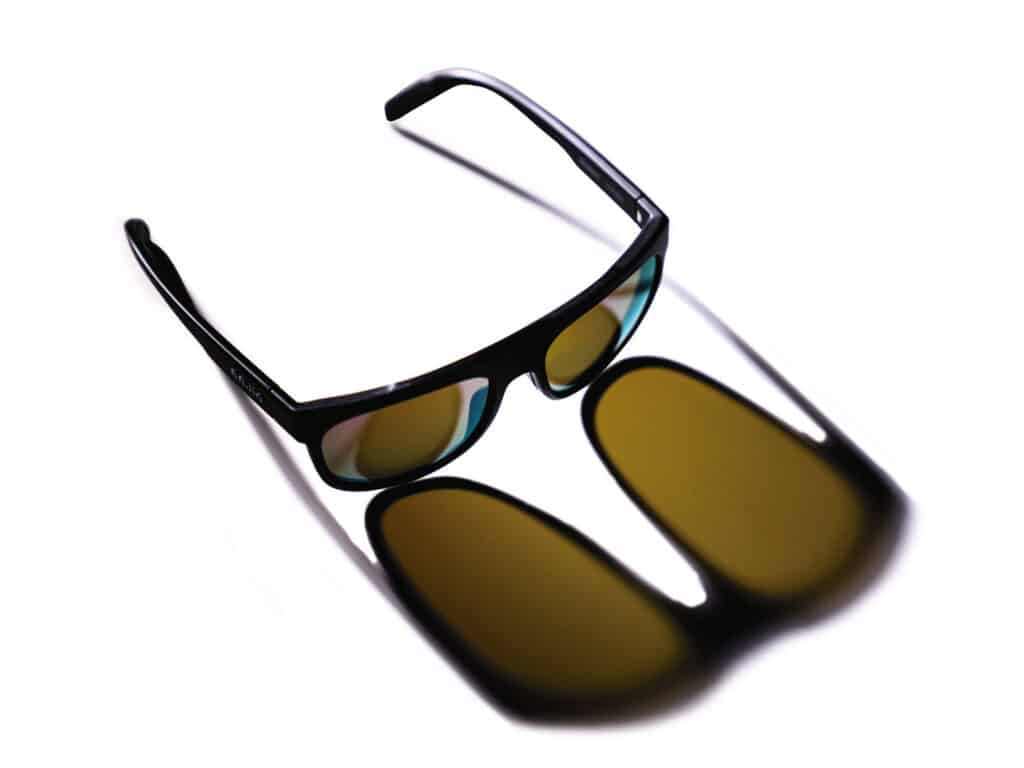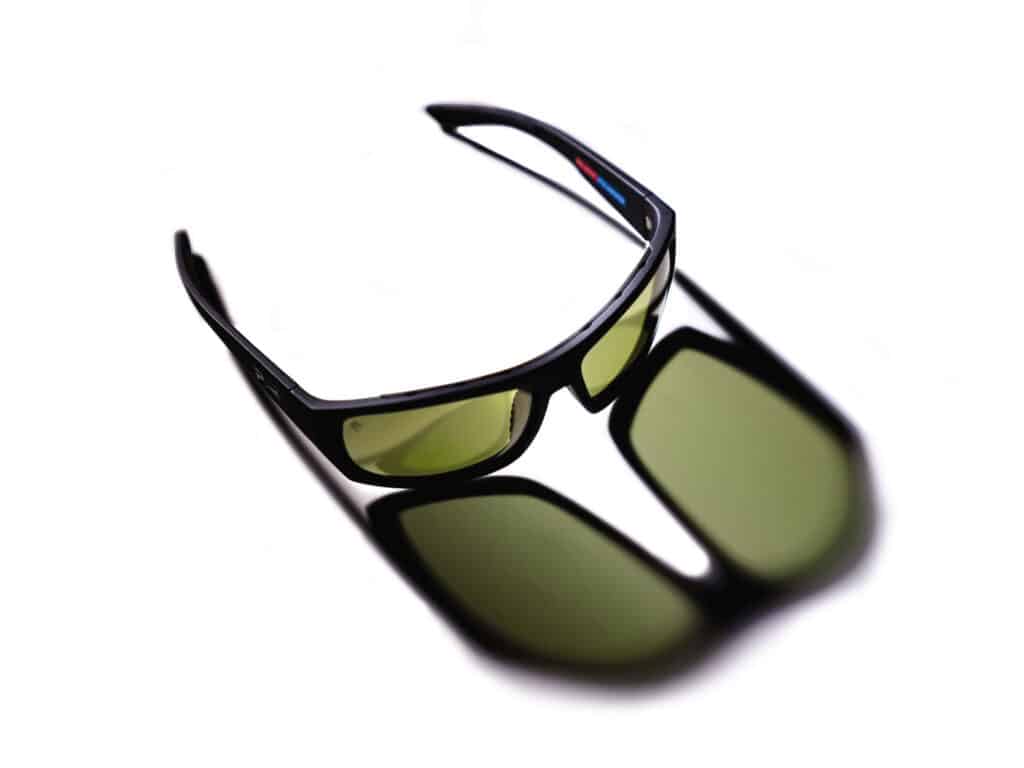
The angle of the sun can be 20 percent to 50 percent lower in the fall than it is during the brightest days of summer. More low-angle light means more glare, which makes it harder to see into the water. Fall’s shorter days also lead to more casts at dawn and dusk. We talked to four experts to get their takes on what you need in shades that help you spot more cruising fish during the low-light months of the year.
More Coverage
Glare is great at sneaking around sunglasses frames. Preventing light from getting around the bottom and sides of your glasses makes it easier to spot fish and structure and helps reduce eye fatigue and strain.
Experts recommend dark-colored frames that contour around your face. The technical term is an “eight base” frame (the higher the number, the more severe the curve), but the common name is “wraparound.” Tall, wide temples and sun shields are also helpful for keeping sunlight at bay.
“A performance frame with an eight-base curve is going to be your best bet to manage light,” says John Sanchez, vice president of product strategy at Costa.
“All of our eight-base frames offer maximum coverage. The Pro series includes some of our best, with top hooding and side shields that really help block out any extra light.”

More Coatings, Less Glare
Polarization helps you see through glare, but the most effective way to reduce the effects of light bouncing off the water are mirroring and anti-reflective coatings.
“When the light is coming at you from an angle, you need as much anti-reflective coating on the inside as you do on the outside,” says Fletcher Robins, supply chain manager at Fin-Nor sunglasses.
With more fishermen choosing dockside models that don’t provide as much light-blocking coverage, the reflective coating on the inside becomes critical. And the more layers of coatings, the better; beware inexpensive lenses that might only have a single coat.
Robins recommends an angling-specific design that combines a full-coverage frame with multiple premium coatings.
“We’re really proud of our lenses because they offer seven layers of anti-reflective coatings,” Robins says. “That makes a huge difference.”

Polarizing Options
Experts agree lenses that provide high-light transmission are the right choice for fall. But some of those tints don’t provide enough polarization to effectively see through surface glare.
Al Perkinson, CEO at Bajio, explains this well: “The visual light transmission for most yellow lenses is high, around 24 percent, so they let in a lot of light. But the polarizing efficiency [of yellow lenses] is low—around 65 percent.”
Perkinson says the efficiency must be over 85 percent to qualify as fully polarized. So, most yellow lenses won’t allow anglers to pierce through surface glare and spot fish finning below. His suggestion is to use lenses that allow 16 to 20 percent light transmission.
Low-Light Lens Tints
To maximize light transmitted and still offer enough polarization to peer into the brine, experts prefer copper, gold or rose lenses. These colors best balance light transmission, contrast, reflection reduction and color filtering.
Lance Shaughnessy, manager at Pelagic, was adamant when I spoke with him: “If I can only have one lens color, it’s going to be some kind of copper or bronze—or the new gold we’ve just introduced. These colors are the best.”

Always Have Options
Flexible lens colors are excellent for rapidly changing fall conditions, but Shaughnessy makes another great point: “While it’s OK to have one set, it’s also important to think about sunglasses like lures. You wouldn’t have one lure for all situations, so why rely on just one pair of glasses?”
His solution: one pair for bright sun, and one low-light specialist. Keep them both handy and you’ll be ready no matter what the sun is doing.









